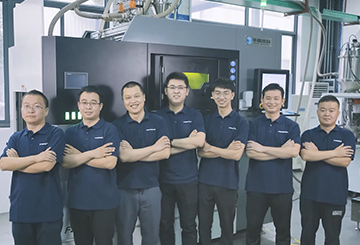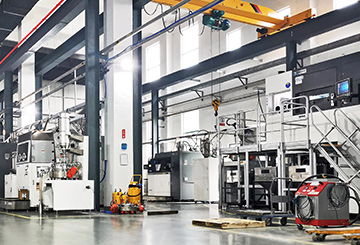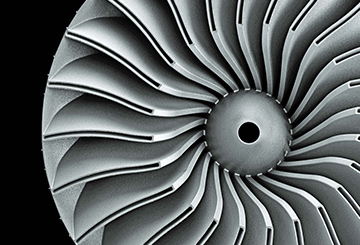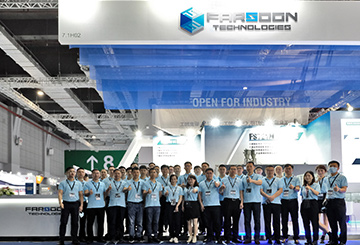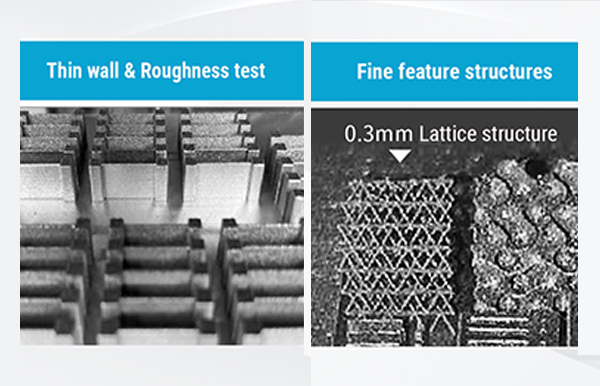In metal industrial 3D printing, machine hardware is the key role. We are happy to share with you a few quick machine-related tips on 5 major aspects: gas flow, filtration system, recoating process, base plate preparation and build chamber elements; and the impacts they can make to the final results. Now let’s get started!
1. Gas flow
Being a key element for determining the quality of a built part, inert gas is accelerated by the blower creating a uniform gas flow over the part bed to ensure a smooth printing process. The major functions of the inert gas flow are:
• On-time removal of smoke and dust generated by the laser melting process to prevent contamination by sputtering particles to the internal structure of the part.
• Preventing metal powder oxidation during the printing process to ensure uniformity of part properties and performance, especially for large parts that take multiple days to print.
• Maintain a clean chamber environment and reduce the risk of potential fire hazard during operation, especially when processing active metal materials.
The gas flow design of Farsoon Metal 3D printing systems is simulated and optimized by using fluid mechanics simulations, achieving uniform performance, and high-quality build parts.
2. Filtration System
The removal of dust generated during the metal sintering process is key to the final part success and safety of operation. The circulating inert gas has the critical job of removing dust and particulates from the process chamber and returning it after filtration. Over time the filters will accumulate metal condensate and particulates which will reduce the gas flow across the part bed. Once the gas flow is restricted enough to cause a rise in pressure in the blower system, the effectiveness of the filtration system is diminished, and particulate will not be removed completely. This can result in poor part quality and unsafe operating conditions. Therefore, the condition of the filtration system must be confirmed before starting the build, especially for parts with long build times, and should be replaced in a timely manner.
Farsoon’s metal AM systems are all equipped with long-lasting filtration system. Medium to larger sized platforms are now compatible with permanent filter system allows for the processing of active materials with lifespan more than 10 years. The extended service time suits industrial customers for ease of operation, economical additive production and quality of the manufactured part. Meanwhile, users can monitor the filtration system for its current usage time and status, ensuring smooth management and build operation.
3. Recoating Process
The metal powder bed fusion technology is a repeat process of scanning and recoating — The build chamber will drop one-layer thickness once the laser finishes melting the current layer, followed by the new layer of powder evenly delivered by a recoater over the part bed. The operation of the recoater is crucial to the quality of the final build part, as it needs to be carefully checked and cleaned before each printing job in case of any damage, or remaining powder that may affect the sintering process. Farsoon metal production laser sintering systems are equipped with a visual monitoring feature, offering real-time detection, data-logging of the powder recoating quality and user-customizable powder compensation mechanism to best ensure consistency and high-quality of the powder recoating process.
4. Base Plate Preparation
The selection and preparation of the base plate is a key starting point to enhance a successful metal laser sintering process. First, the material of the base plate should have good metallurgical compatibility with the metal powder being processed, for example an aluminum plate is required for aluminum powders while a stainless-steel plate can be used for multiple materials such as various steel formulations, bronze, etc.
Next, we will decide the right thickness of the base plate, which is dependent on required sintering parameters and post processing. For example, a thinner base plate tends to deform when printing a workpiece with high internal stresses.
Lastly, the surface flatness of the base plate also needs to comply with the processing requirements – an uneven plate surface will disturb the thickness of powder recoating and cause weak adhesion where the metal powder and base plate failed to be completely welded. The workpiece will eventually separate from the base plate as thermal stress accumulates during the printing process.
Another point of consideration is the surface treatment for the base plate. The base plate surface needs to be prepared for appropriate roughness for the designated processing — usually by grinding, milling, or sanding. We do not recommend sandblasting, which can leave residual sand blasting media that will contaminate the metal powder. On the other hand, if the base plate surface is too smooth, the powder recoating of the first few layers can be uneven, which may also affect the sintering process. Lastly, before placement into the processing chamber, all base plate surfaces need a good cleaning with alcohol to remove any dust, oil, or particles.
5. Build Chamber
The building chamber must be kept clean to avoid cross-contamination of powders of different brands or batches. The laser window and other components need to be cleaned before sintering.
Particles can be ejected from the melt-pool during the printing process; most of the particles will be removed by the inert gas, but a small part will remain in the build chamber. It’s important to ensure the laser window is clean before printing. If the particles get on the laser window, it will reduce the power output of the laser, which can lead to uneven surfaces on the sintering surface, resulting in printing failure.
Farsoon offers high quality, industrial level metal Laser Powder Bed Fusion systems featuring a wide range of build envelope size and production capability with great ROI. Equipped with powerful multi-laser options, advanced scanning systems, in-build monitoring and many other features, Farsoon metal machines produce high-quality, repeatable parts with excellent mechanical performance, accuracy, and surface finishes. Find the right metal 3D printer for you, by contacting us: globalinfo@farsoon.com.

